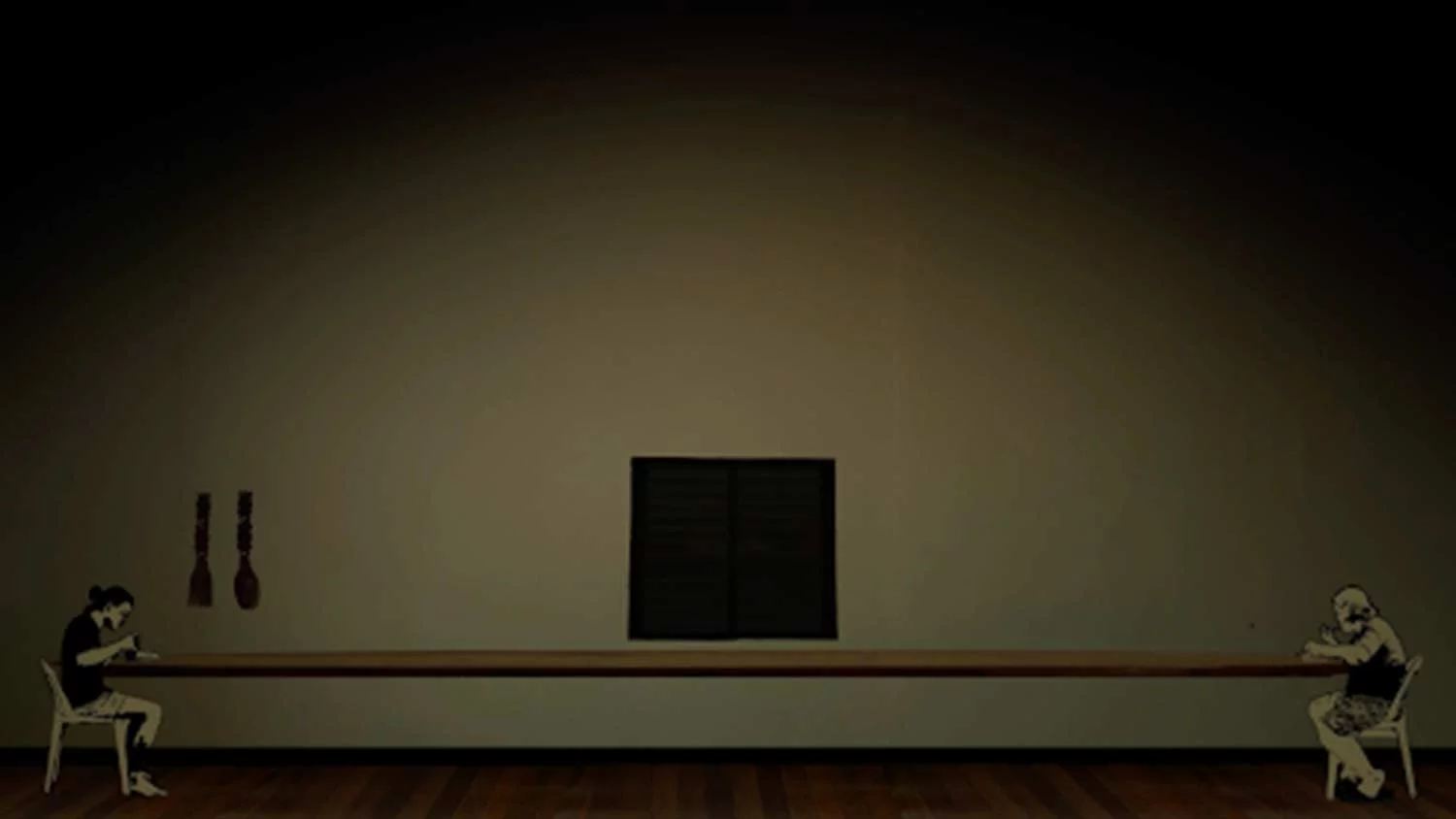‘Distance’: A Perilous Road to Reconciliation
By Ahaan Arora

Dexter Paul De Jesus’ Distance (2021) is a short film that employs rotoscoping, a technique that combines animation with live action. This device is used to depict the inner conflict of a young man. This, in conjunction with the idea of his absent mother returning after seven years creates a sombre yet lifelike conception of estrangement.
When watching the film, it was clear that there was a lack of mutual understanding between mother and son. This is demonstrated in a scene within the first half, where the two sit on either side of a table, facing each other. The viewer may instinctively notice two key reverse angle shots that showcase different subjective points of view, with the table in the seam of a match cut. Within the dimly lit atmosphere, we move closer to the mother as she tries to initiate conversation with her son, whose eyes are cemented on a computer screen and who continues typing; his priorities firmly in place. We then move away from her as she fails in her efforts, a seemingly inevitable eventuality.
The film tells a simple story with concentrated emotion, taking place in tense interiors as well as against the busy backdrop of an unnamed city in the Philippines. The rotoscopic device, with the characters as hand-drawn animation against live-action backgrounds creates a contrast which underscores an otherness to the narrative’s personas. The contrast moulds an alienation that is present throughout the duration of the film. One may argue that these personas are so closely tied to their quandaries and predicaments to the point at which others blend in an immaterial and nebulous blur. Both are protagonists in the stories of their lives. It is this stylistic element of the film that underlines the universality of emotions being displayed, such as grief, regret and reconciliation.

It is difficult to overlook the staggering visual imagery of the expansive table in the third act, finally within full view. The extent of the length of this table is illustrated in a wide shot. The shot’s mise-en-scène makes use of minimalism with a window frame and spoon and fork decor on the wall. There is also a light diegetic sound of cutlery tapping plates which attempts to establish a sense of routine. The very stretch of the table, in concert with the title of the short film, gives rise to the thought that the extensive item of furniture is suggestive of a physical (almost hyperbolic) representation. This representation is conceivably the disparity in understanding between mother and child. Thus, the events of the film serve as a progression towards familial concord; the contraction of the table.
The short film’s ending is the only moment in which the audience hears music. This makes for a stirring and expressive instant during which harmony begins to be restored. The delicacy of the melody combined with the powerful image of the son’s hands shaded with flushes of colours heightens this moment of newfound insight. This departure from realism towards the realm of abstraction elicits a visceral response from the audience.
Dexter Paul De Jesus, known for directing alternative films, skilfully crafts a sensitive story. With its nuances, Distance presents an illustration of the difficulties faced by families of migrant labourers. The gravity of these difficulties is truly felt when taken in with an open spirit.

